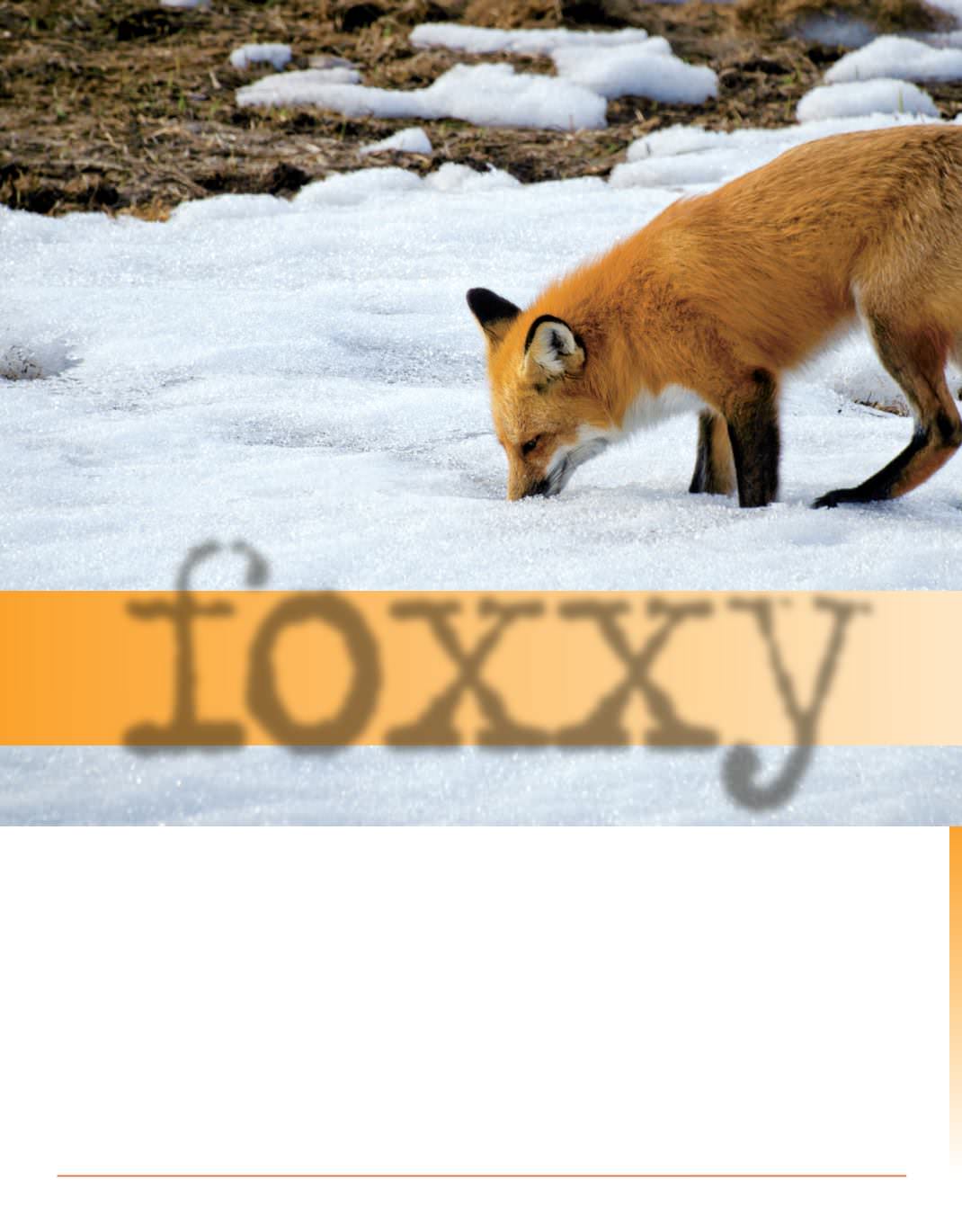
106
|
WINTER
2016
As a photographer,
capturing the elusive
fox is always a thrill. Notoriously cunning,
foxes were not found here before colonial
times but were importedby European settlers
primarily for the sportof hunting. Theyquickly
adaptedand flourishedand their pelts were
prized. As farming settlements becameestab-
lished, foxes, likemanyother predators,were
viewedas undesirable animals andbounties
wereoftenpaid toeliminate them.Wenowun-
derstandbetter the role that foxes andother
predatorsplay in theecologyof our forests.
TheRed fox is secretiveand largelynocturnal.
Because of itswell-developed sense of hear-
ing, sight, and smell it isanefficient and lethal
predator—essentiallyanomnivore, iteatswhat-
ever is available. They are found mostly in
areaswith interspersed croplands, old fields,
and woodlots, especially along the edges
formedby thesehabitatsbut theyarenot crea-
tures of dense forests. Each territory is occu-
piedbya fox familygroup. Theseoftenconsist
of apair - dog foxandoneor two vixen - and
their associated cubs.Most of their hunting is
done at night—by themselves—they can travel
over fivemiles inonenight.
Theirwinter diet consistsmainlyof smallmam-
mals suchasmice, squirrels, and rabbits.
In the summer months, insects, crayfish, earth-
worms, beetles, fruit including corn, berries
(particularly blackberries), apples, grasses,
and vegetablematter play amore important
part in their feeding habits. Theywill also eat
carrion.
Red foxes are exceptionally goodmousers—
they can hear one squeal almost 150 yards
away. They also haveadefinite fondness for
chicken.We lost 16 inoneafternoon—the fox
cleanedusout! Likemostothermembersof the
wilddog family, theyare intelligentbut shyand
areveryadaptable,often learning to livequite
close tohumans—aswe learned thehardway.
foxxy


